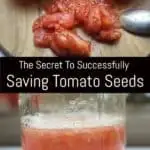
Saving seeds from most fruits and vegetables is pretty straightforward.
You wait until the crop has reached harvest time, harvest it, pull out the seeds, let them dry, and store them; for instance, this is how you save zucchini seeds.
Saving seeds from tomatoes is a little bit different.
Tomato seeds germinate best if they’ve been fermented before they’re stored. Of course, there are certain things you should know before you even plant one tomato seed.
You can, of course, save tomato seeds without the step of fermentation, but this simple step greatly increases the number of successful seeds you’ll have come planting time, and it’s quite easy to do!
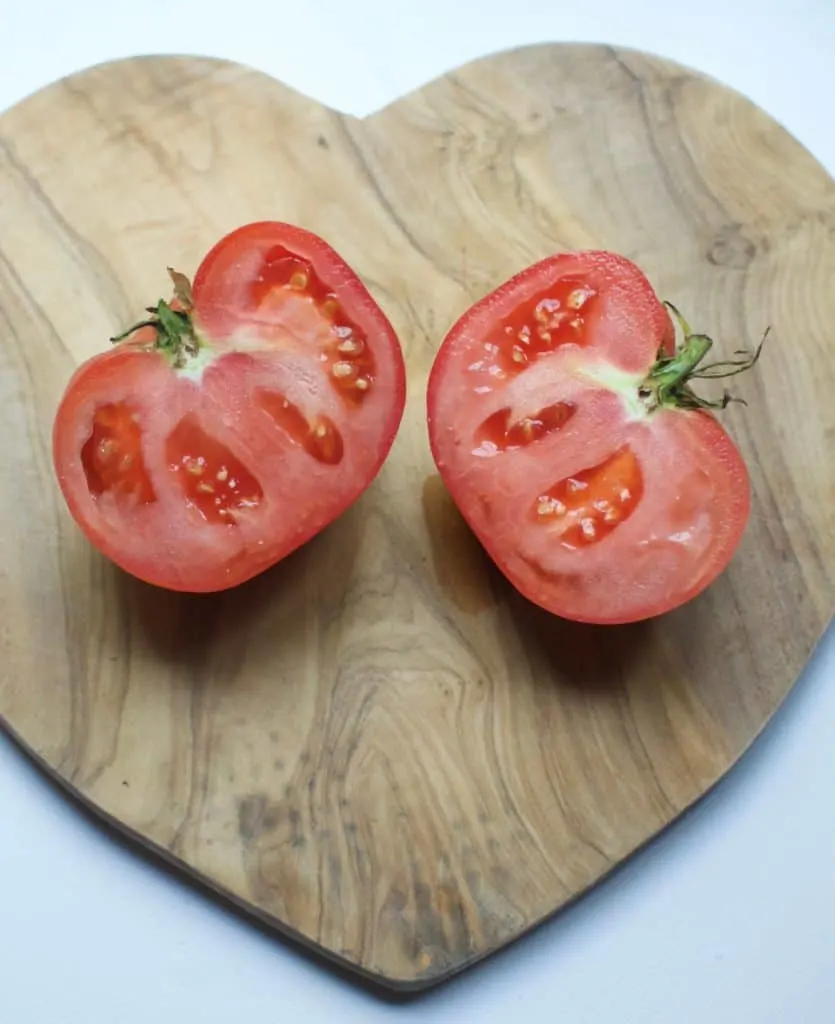
4 Reasons To Ferment Your Tomato Seeds
1. It’s more natural
When tomatoes re-seed themselves naturally, the tomato fruit falls to the ground where it rots. The seeds inside the tomato go through the process of fermentation, then dry and sprout come springtime.
Fermenting the seeds yourself is imitating this natural process.
2. It makes for cleaner seeds
Fermenting the seeds is an easy way to get them completely clean, without all that gelatinous tomato goop coating them.
3. It results in better germination rates
Fermentation also removes pathogens on the seeds that could inhibit germination later and removes the gel around each seed which also inhibits germination.
4. It separates the good from the bad
Fermentation is a great way to easily find out which seeds are winners and which are not.
Good seeds will sink to the bottom of the jar during fermentation, and bad ones will float, getting caught up in the layer of mold that forms on the surface.
How To Save Your Tomato Seeds
Step 1: Slice and Scoop the Seeds
Slice the tomato in half so the inside is exposed. Use a spoon to scoop all the seeds and put them, as well as the pulp and gel, into a clean jar.
You can still use the remaining flesh for eating! It’s great to use in sauces.
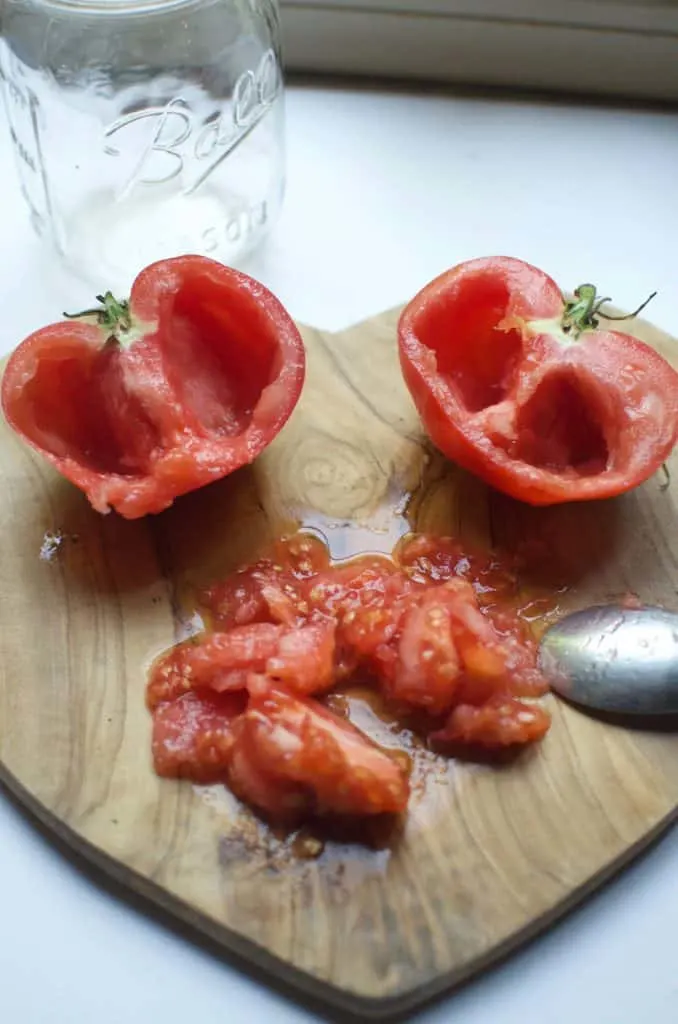
Step 2: Prep the Seeds for Fermentation
Add enough water to the jar to cover the seeds and stir the mixture thoroughly with a spoon. Put a cloth cover on top of the jar and secure it with a rubber band or the lid to the jar.
It’s important to allow air to get in and out of the jar but keep out insects and debris.
Leave the jar in a remote spot that will stay warm but not in direct sunlight. The jar will sit for several days while the seeds ferment.
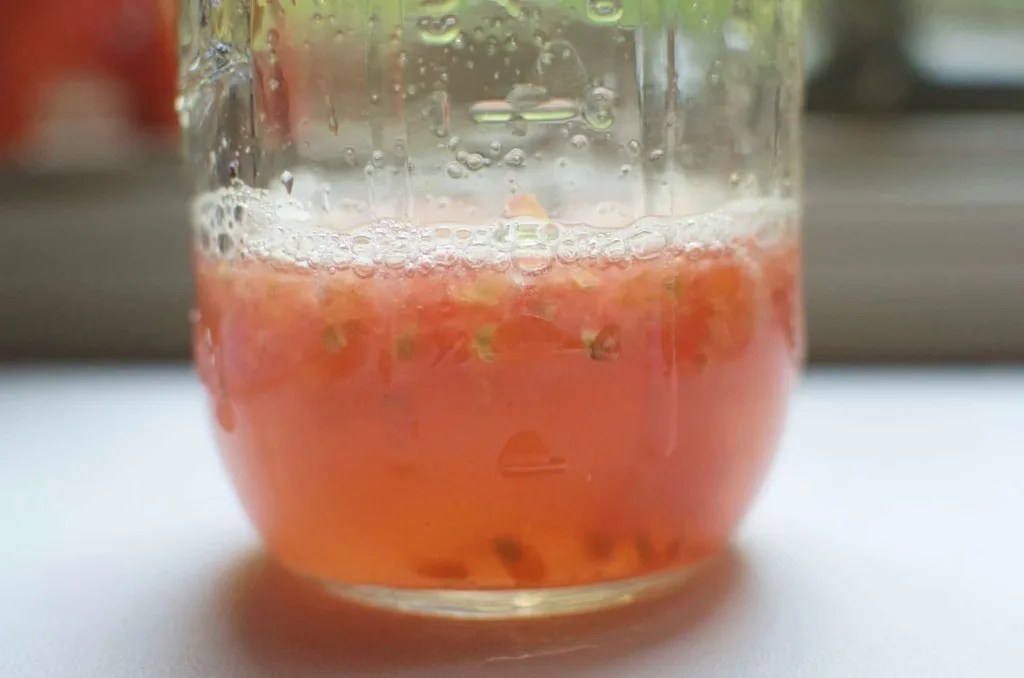
Step 3: Fermentation
During fermentation, you might notice some strange smells emanating from the jar. You also might see some mold forming on the top layer of tomato pulp.
Don’t be alarmed at any of this, it’s all part of the process.
You’ll know this step is done when many of the seeds have sunk to the bottom of the jar, the top layer is coated in mold, and you may see some small bulbs forming in the liquid.
Don’t leave the seeds longer than a few days or they’ll start to germinate in the jar!
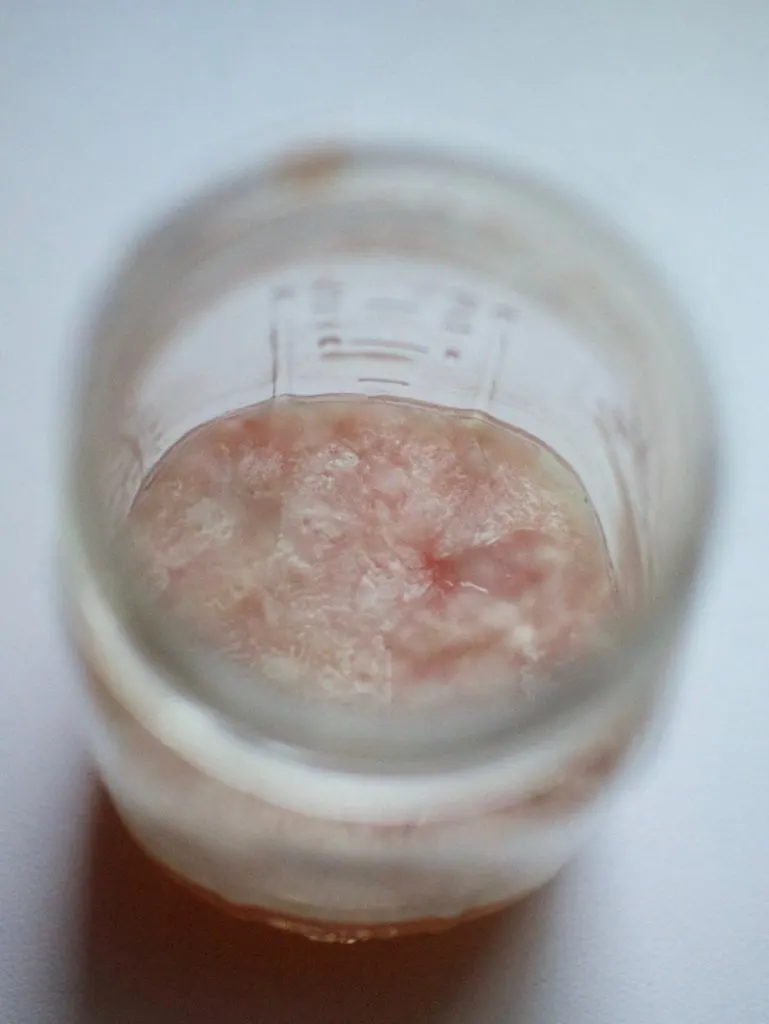
Step 4: Wash and Dry the Seeds
If a thin layer of mold has formed on your tomato seeds, know that it is perfectly normal and okay, but now it’s time to get rid of it.
Carefully remove and dispose of the mold, then pour the seeds and pulp into a fine mesh strainer to wash them.
Wash the seeds thoroughly in cool water to remove any remaining tomato pulp then leave them to dry.
We like to leave the seeds right in the strainer to dry and remove them after a day. You may also choose to dry your seeds on a paper plate, but beware they may stick!
When the seeds have thoroughly dried, put them into a ziplock bag or envelope for storage.
Don’t forget to write the date and type of tomato on the container so you don’t forget come planting season!
Store dried seeds in a cool, dry place that won’t be disturbed by critters like mice, insects and chipmunks.
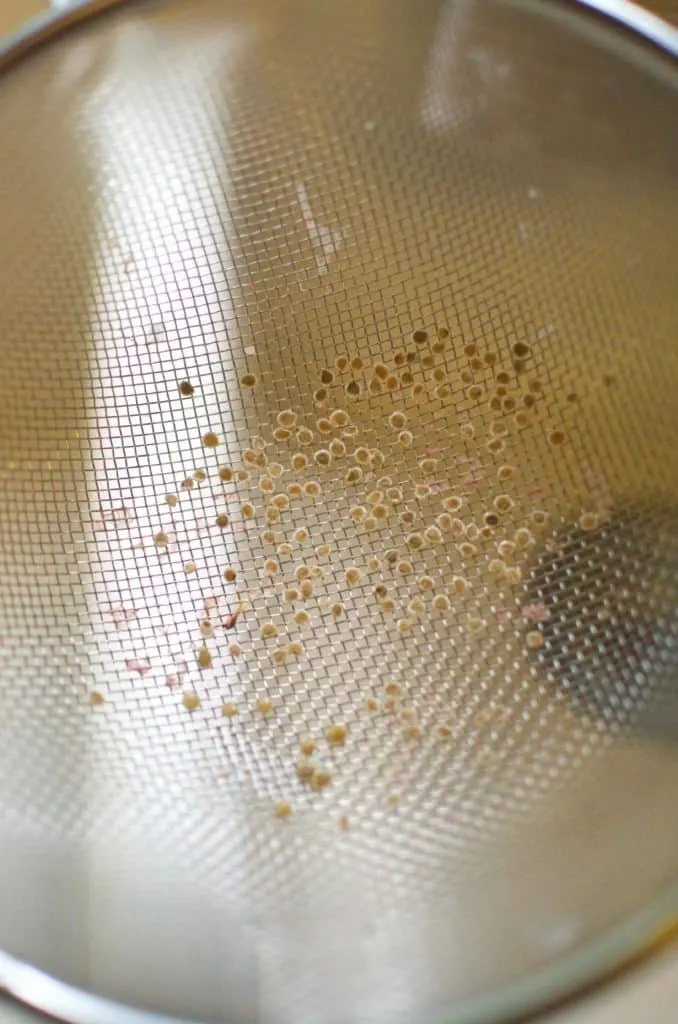
Tomato Seed Saving Tips
Don’t bother with saving seeds from store-bought tomatoes. These tomatoes are most likely hybrid varieties. Hybrids won’t grow true to the original plant. Instead, save seeds from heirloom or open-pollinated varieties.
The best time to save tomato seeds is at the very end of tomato season, in the early fall. The tomato plants have almost come to the end of their life and their fruits are perfectly ripe! You’ll be up to your eyeballs in tomatoes at that point and wondering what to do with them all.
Be sure to stay super organized while saving seeds! It’s easy to accidentally mix varieties during this process. We recommend saving just one tomato variety at a time so you don’t get confused.
Label all seeds as you work so you don’t get confused.
Pin This To Save For Later
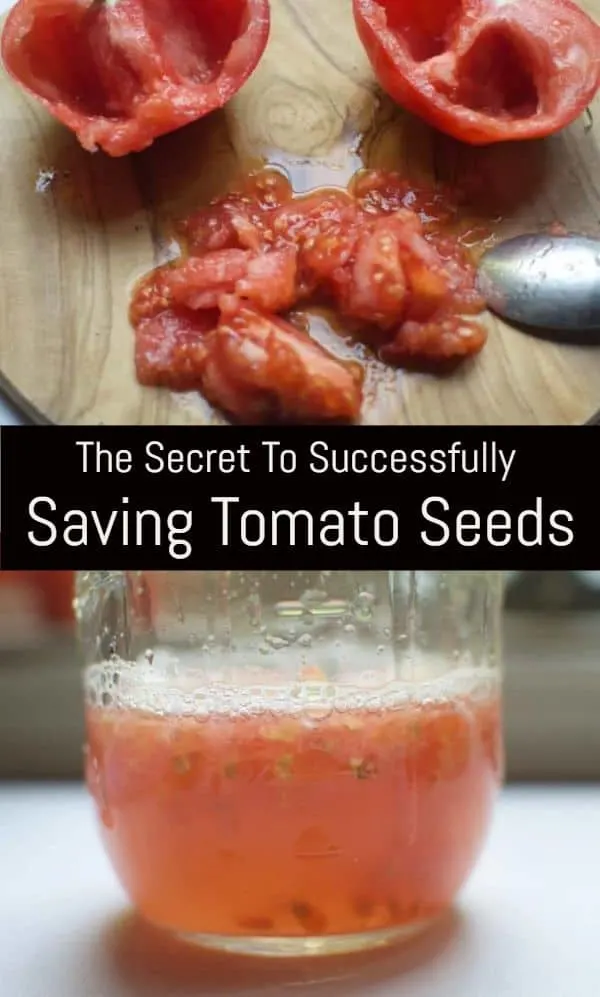
Read Next: The Tomato Pruning Trick For Huge Harvests

Get the famous Rural Sprout newsletter delivered to your inbox.
Including Sunday musings from our editor, Tracey, as well as “What’s Up Wednesday” our roundup of what’s in season and new article updates and alerts.


